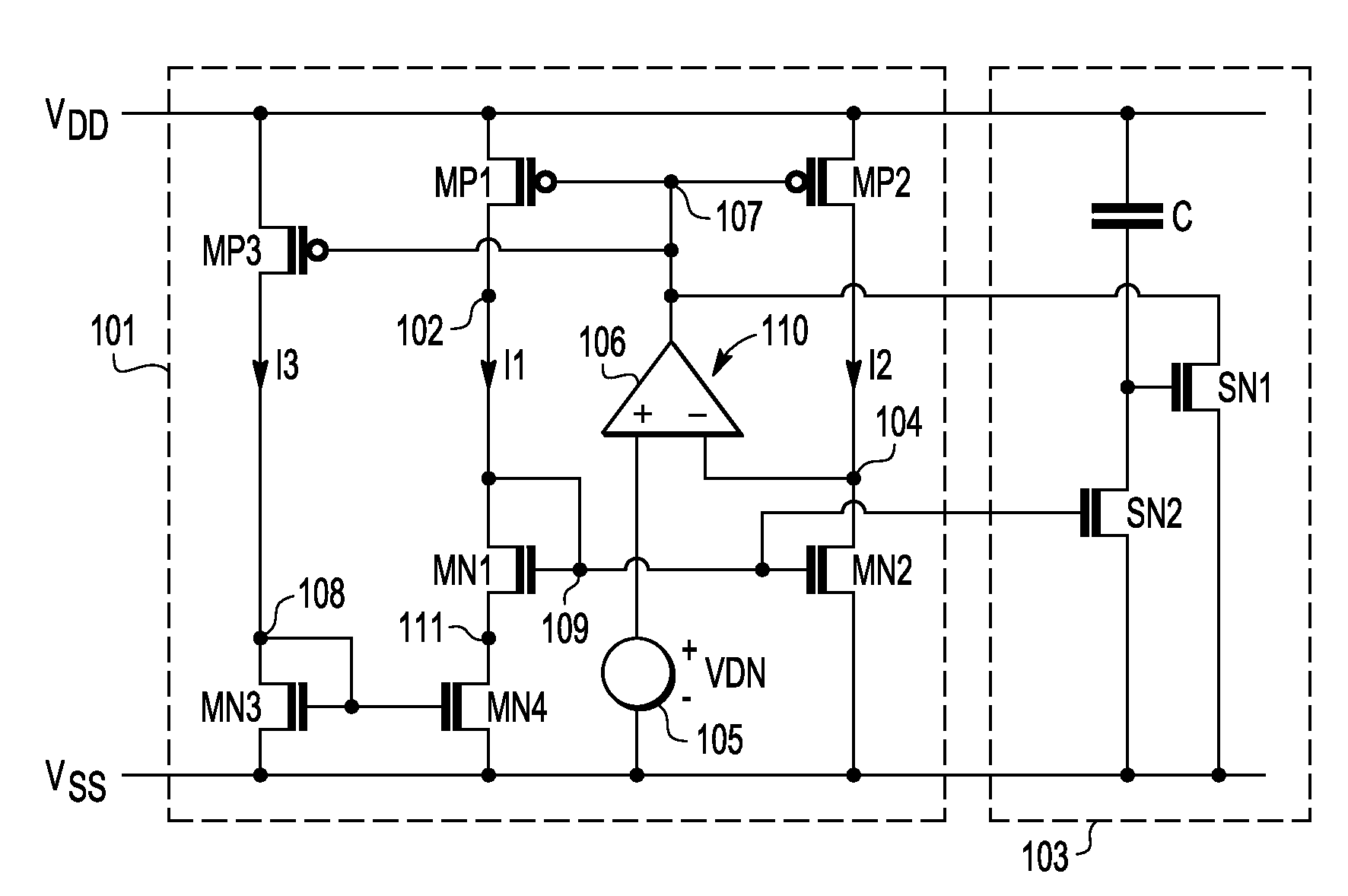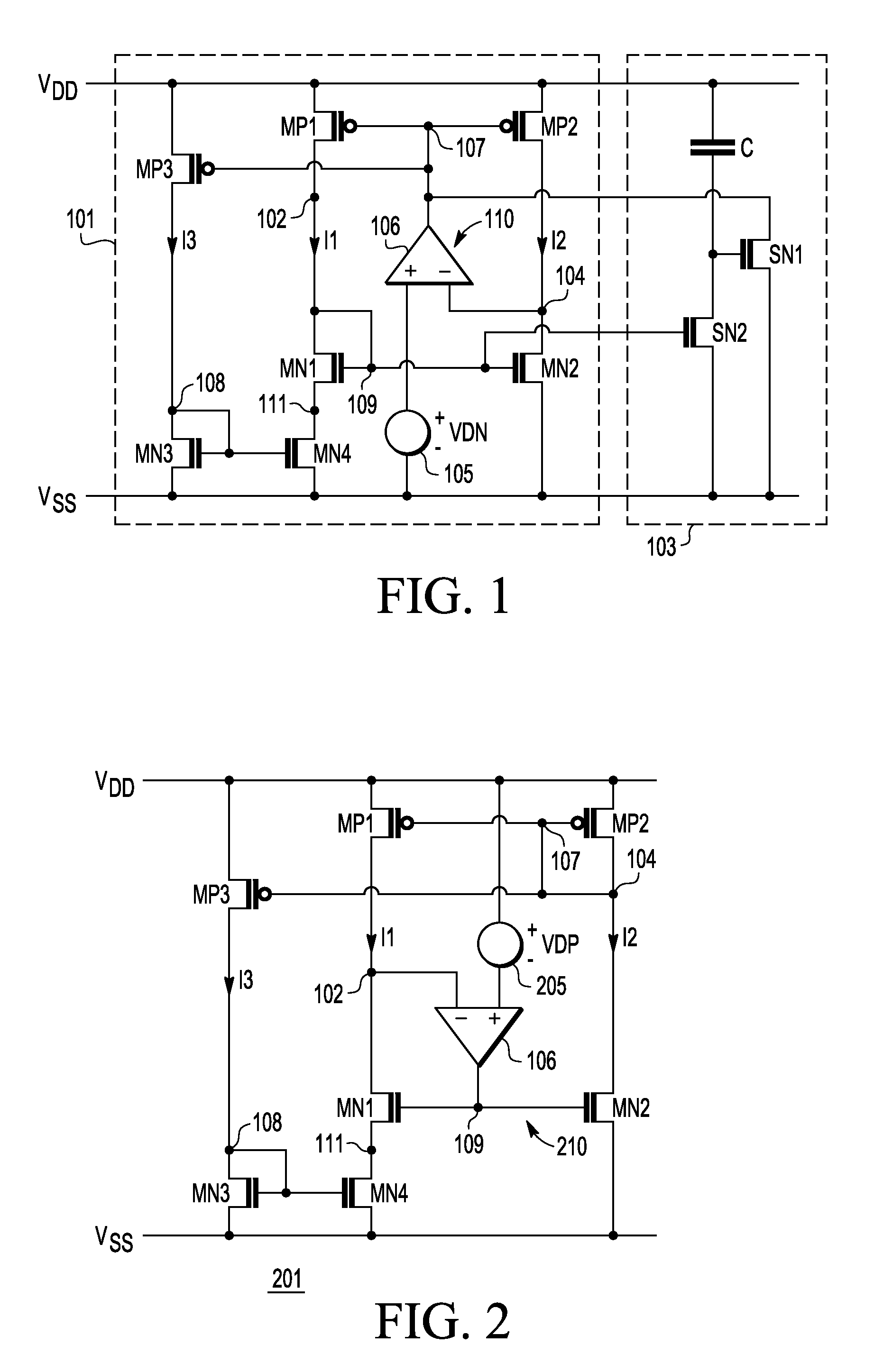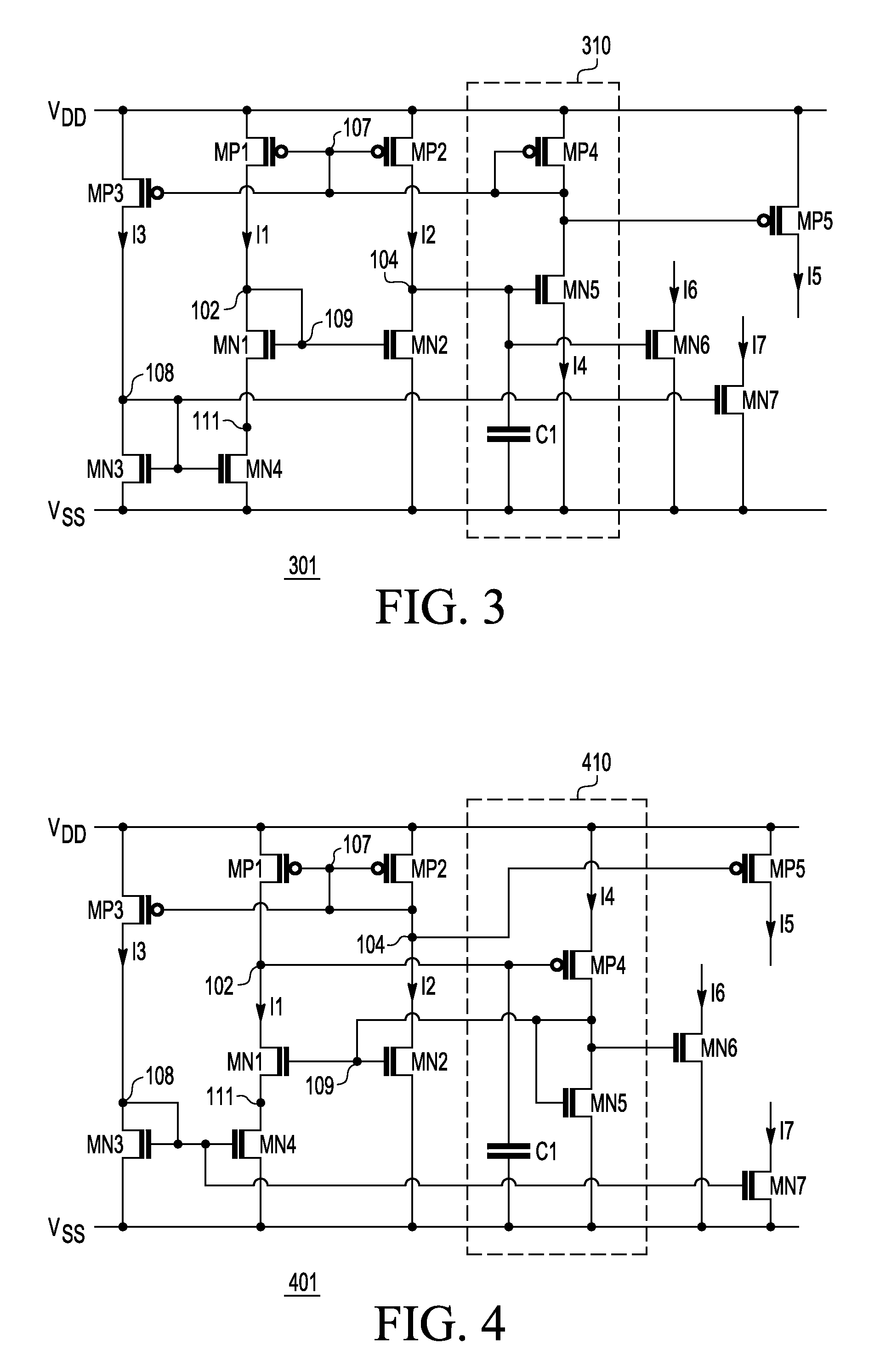Supply independent current reference generator in CMOS technology
a current reference and generator technology, applied in the direction of electric variable regulation, process and machine control, instruments, etc., can solve the problems of inability to manufacture precision resistors, inability to meet the requirements of the supply voltage, and undesirable dependence on the supply voltage, so as to achieve the effect of constant current level
- Summary
- Abstract
- Description
- Claims
- Application Information
AI Technical Summary
Benefits of technology
Problems solved by technology
Method used
Image
Examples
Embodiment Construction
[0016]The following description is presented to enable one of ordinary skill in the art to make and use the present invention as provided within the context of a particular application and its requirements. Various modifications to the preferred embodiment will, however, be apparent to one skilled in the art, and the general principles defined herein may be applied to other embodiments. Therefore, the present invention is not intended to be limited to the particular embodiments shown and described herein, but is to be accorded the widest scope consistent with the principles and novel features herein disclosed.
[0017]FIG. 1 is a schematic diagram of a current reference generator 101 implemented according to one embodiment coupled to a startup network 103. The current reference generators described herein are implemented using transistors of complementary conductivity types, such as P-type or P-channel metal-oxide semiconductor (MOS) transistors (or PMOS transistors) and N-type or N-ch...
PUM
 Login to View More
Login to View More Abstract
Description
Claims
Application Information
 Login to View More
Login to View More - R&D
- Intellectual Property
- Life Sciences
- Materials
- Tech Scout
- Unparalleled Data Quality
- Higher Quality Content
- 60% Fewer Hallucinations
Browse by: Latest US Patents, China's latest patents, Technical Efficacy Thesaurus, Application Domain, Technology Topic, Popular Technical Reports.
© 2025 PatSnap. All rights reserved.Legal|Privacy policy|Modern Slavery Act Transparency Statement|Sitemap|About US| Contact US: help@patsnap.com



